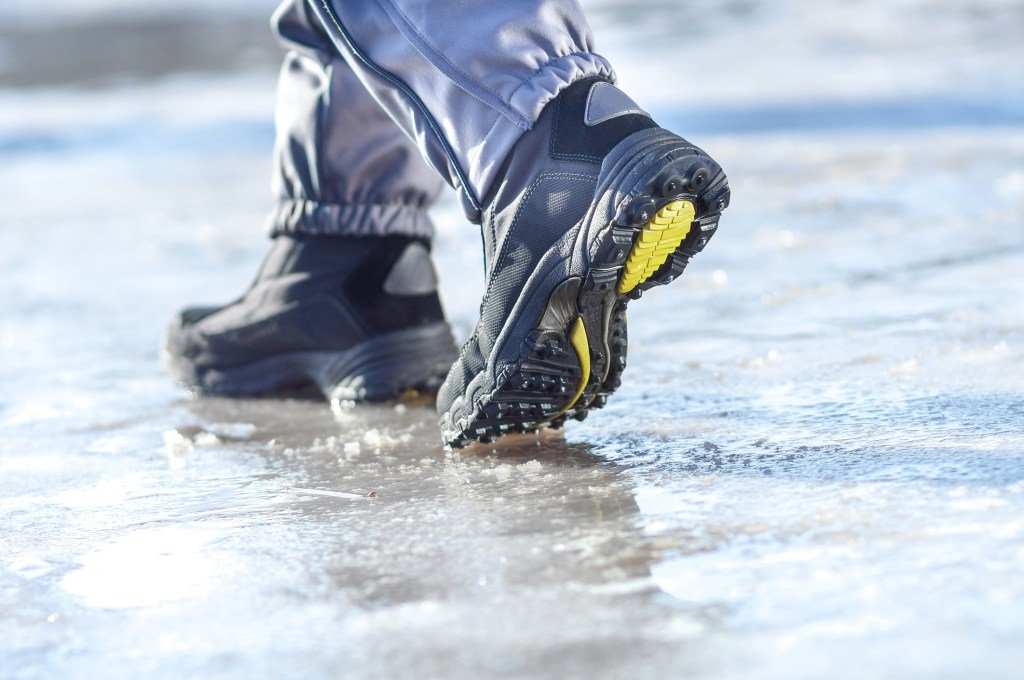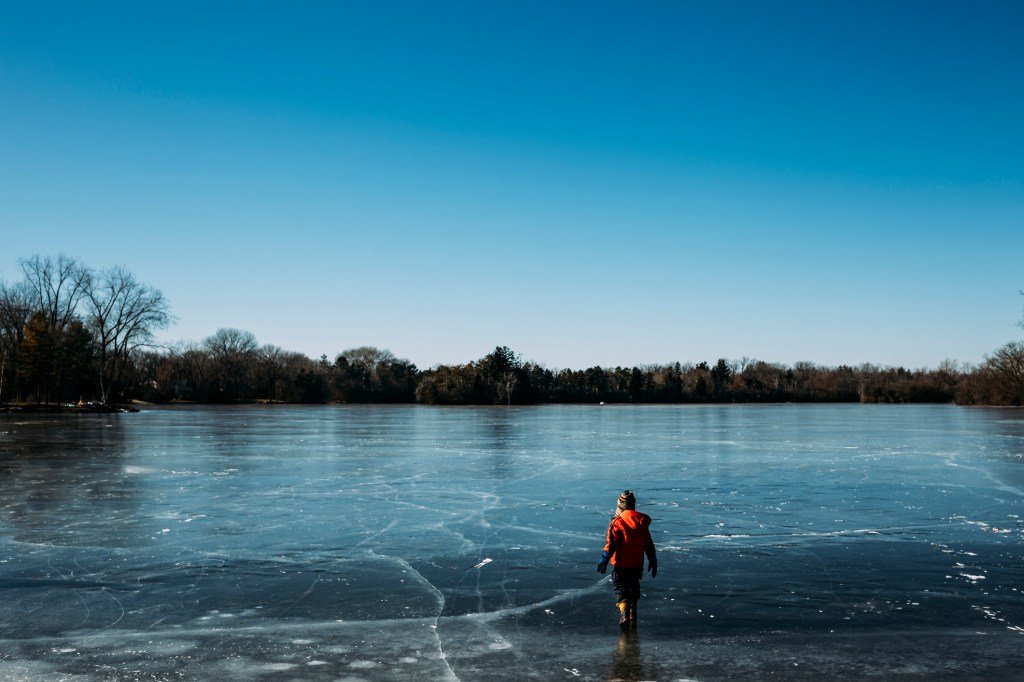

Frozen lakes offer a whole new world of winter fun — ice skating, ice hockey, ice fishing, cold plunges. But misjudging how frozen the body of water is can be a fatal mistake.
Some people will tell you if the ice is four-plus inches thick, it’s safe for you to walk on. But it’s really not that simple: “Not all ice is created equal, and it’s not as easy as ‘this many inches is safe’,” says Molly Detjens, recreation warden with the Wisconsin Department of Natural Resources.
Late in the season, the ice might be 12-inches thick, but depending on the recent weather as well as the lake or pond’s location, that ice could be rotted or weakened and not at all safe, she adds.

There are a ton of factors that go into how solid the ice is, including:
- Water flowing underneath or nearby, like an inlet or outlet nearby, or a spring or water coming up from underneath. “If there is a current or any flowing water, the ice will vary in thickness,” Detjens explains.
- Recent rain, which interrupts the ice forming and can also cause the ice to weaken or “rot.”
- Prolonged high temperatures, which can not only cause the ice to melt a bit and thin out, but it also causes snow along the shoreline to melt, which causes the edge of the ice to weaken or “rot.”
- High winds, especially on bigger lakes, can open expansion cracks and shift the ice, which can actually cause the chunk of ice you’re on to separate and float off, Detjens explains.
- Snow cover, which insulates the ice and prevents it from thickening quickly.

Make sure to follow these best practices:
Don’t go out alone
Take a buddy with you out on the ice, Detjens advises. If anything happens like the ice breaks, having someone out of the water with you can make all the difference. What’s more, tell someone on land where you’re going, too. And be specific — tell them exactly where on the lake you plan on entering and walking around, and tell them what time you plan to be back. If bad weather rolls in and reduces visibility, someone knowing your exact location can save the day.
Ask your local bait shop or outfitters
Your best bet to know if an icy body of water is frozen enough? Call your local bait shop, fishing clubs, and outfitters and ask. You can also ask any fisherman you see coming off the lake, Detjens adds.
This is because the people who know the area well and recent weather conditions are going to have the best insight into what is safe.
Look for a shallow pond protected from the wind, with no flowing water.
Your thickest ice is going to form over shallower waters that don’t have a current or any water moving underneath it, Detjens explains. She adds that a protected cove or slew that doesn’t get as much wind is going to be the best preserved over the course of the winter, too.
Look at the shoreline.
“With rain and sunshine, often the shoreline will be the first place the ice weakens or rots,” Detjens explains. As snow melts on the hillsides, it flows down and will then melt the ice along the edge of a lake. That’s not to say if the shoreline is eaten away at, the ice is compromised. But it is a sign that there has been warm weather in this area recently.
Look for clear ice.
The best ice is going to be clear, blue or black, and firm without any snow on top of it, Detjens says. If you can kick it up like a snowcone, or if the ice looks like a cloudy, gray color, it’s not solid.
Stay off snow-covered or slushy ice.
Snow insulates ice, preventing it from thickening—so snow on the surface is a tell-tale sign the ice might be compromised. Another sign: If you kick at the ice and slush comes off the top. That means the ice is melting.
Bring a spud bar.
A lot of fishermen will bring a spud bar—an affordable 4 to 5-foot piece of steel with a chisel point at the end—with them onto the ice to test the integrity in front of them. You walk out, slam the chisel point into the ice and, if nothing happens, walk a few steps forward and slam it in again out in front of you. This definitely isn’t foolproof but it’s a good initial way to measure how secure the ice is, Detjens explains. If your spud bar goes though, back up.
You can also chink the spud bar through to measure how thick the ice is. This is only helpful if the ice is clear. But, according to the Minnesota Department of Natural Resources, for clear, new ice, anything over four-inches thick means it’s safe to be out on the ice on foot.
Consider bringing ice picks.
It’s smart to carry ice picks with you out on the ice. “If the worst case scenario happens and you do fall through, the hardest part for people is getting back up onto the ice,” Detjens says.









